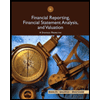
1.
Compute inventory turnover for each company for the most recent years shown.
1.
Explanation of Solution
Inventory turnover:
This is the ratio which analyzes the number of times inventory is sold during the period. This ratio gauges the efficacy of inventory management. Larger the ratio, more efficient the inventory management.
Calculate inventory ratio for Company A’s current year as follows:
Calculate inventory ratio for Company A’s one year prior as follows:
Calculate inventory turnover ratio for Company G’s current year as follows:
Calculate inventory turnover ratio for Company G’s one year prior as follows:
2.
Compute days’ sales inventory for each company for three years shown.
2.
Explanation of Solution
Days’ sales Inventory:
Days’ sales in inventory are used to determine number of days a particular company takes to make sales of the inventory available with them.
Calculate days’ sales inventory for the Company A’s current year as follows:
Calculate days’ sales inventory for the company A’s one year prior as follows:
Calculate days’ sales inventory for the Company A’s two year prior as follows:
Calculate days’ sales inventory for the Company G’s current year as follows:
Calculate days’ sales inventory for the Company G’s one year prior as follows:
Calculate days’ sales inventory for the Company G’s two year prior as follows:
3.
a)
Determine whether the inventory turnover of Company A would underperform or outperform.
3.
a)
Explanation of Solution
Company A’s inventory turnover ratio is more than the industry average of 15 for inventory turnover for both the current year and prior year. Hence, Company A is outperformed.
b)
Determine whether the inventory turnover of Company G would underperform or outperform.
b)
Explanation of Solution
Company G’s inventory turnover ratio is more than the industry average of 15 for inventory turnover for both the current year and prior year. Hence, Company G is outperformed.
Want to see more full solutions like this?
Chapter 6 Solutions
Principles of Financial Accounting.
- Don't use ai. A company has the following data: Cash: $50,000Accounts Receivable: $30,000Inventory: $60,000Current Liabilities: $70,000a) What is the company’s acid-test ratio?b) Is the company in a strong liquidity position based on this ratio?arrow_forwardQuestion 5:A company has the following data: Cash: $50,000Accounts Receivable: $30,000Inventory: $60,000Current Liabilities: $70,000a) What is the company’s acid-test ratio?b) Is the company in a strong liquidity position based on this ratio?arrow_forwardQuestion 5: Acid-Test RatioA company has the following data: Cash: $50,000Accounts Receivable: $30,000Inventory: $60,000Current Liabilities: $70,000a) What is the company’s acid-test ratio?b) Is the company in a strong liquidity position based on this ratio?arrow_forward
- Question 4: Depreciation (Straight-Line Method)A company purchases machinery for $50,000. The estimated salvage value is $5,000, and the useful life is 10 years. a) Calculate the annual depreciation expense.b) What will the book value of the machinery be after 4 years?arrow_forwardInventory Valuation (FIFO Method)A company had the following inventory transactions during the month: Beginning inventory: 100 units @ $10 eachPurchase: 200 units @ $12 eachPurchase: 150 units @ $13 eachAt the end of the month, 250 units remain in inventory. Calculate the value of the ending inventory using the FIFO method. explainarrow_forwardNeed assistance without use of ai.arrow_forward
- Depreciation (Straight-Line Method)A company purchases machinery for $50,000. The estimated salvage value is $5,000, and the useful life is 10 years. a) Calculate the annual depreciation expense.b) What will the book value of the machinery be after 4 years?arrow_forwardA company has the following data: Cash: $50,000Accounts Receivable: $30,000Inventory: $60,000Current Liabilities: $70,000a) What is the company’s acid-test ratio?b) Is the company in a strong liquidity position based on this ratio?arrow_forwardDon't want AI answerarrow_forward
- XYZ Corporation produces a product that sells for $30 per unit. The variable cost per unit is $18. Fixed costs for the year are $72,000. a) What is the contribution margin per unit? b) What is the contribution margin ratio? c) What is the break-even sales in dollars?arrow_forwardI need solution with step by step....?!arrow_forwardQuestion 1: Break-Even Analysis A company sells a product for $25 per unit. The variable cost per unit is $15, and the total fixed costs are $50,000. a) How many units must the company sell to break even? b) If the company wants a profit of $10,000, how many units must it sell?arrow_forward
 Managerial Accounting: The Cornerstone of Busines...AccountingISBN:9781337115773Author:Maryanne M. Mowen, Don R. Hansen, Dan L. HeitgerPublisher:Cengage Learning
Managerial Accounting: The Cornerstone of Busines...AccountingISBN:9781337115773Author:Maryanne M. Mowen, Don R. Hansen, Dan L. HeitgerPublisher:Cengage Learning Managerial AccountingAccountingISBN:9781337912020Author:Carl Warren, Ph.d. Cma William B. TaylerPublisher:South-Western College Pub
Managerial AccountingAccountingISBN:9781337912020Author:Carl Warren, Ph.d. Cma William B. TaylerPublisher:South-Western College Pub Financial AccountingAccountingISBN:9781337272124Author:Carl Warren, James M. Reeve, Jonathan DuchacPublisher:Cengage Learning
Financial AccountingAccountingISBN:9781337272124Author:Carl Warren, James M. Reeve, Jonathan DuchacPublisher:Cengage Learning Cornerstones of Financial AccountingAccountingISBN:9781337690881Author:Jay Rich, Jeff JonesPublisher:Cengage Learning
Cornerstones of Financial AccountingAccountingISBN:9781337690881Author:Jay Rich, Jeff JonesPublisher:Cengage Learning Financial Reporting, Financial Statement Analysis...FinanceISBN:9781285190907Author:James M. Wahlen, Stephen P. Baginski, Mark BradshawPublisher:Cengage LearningPrinciples of Accounting Volume 1AccountingISBN:9781947172685Author:OpenStaxPublisher:OpenStax College
Financial Reporting, Financial Statement Analysis...FinanceISBN:9781285190907Author:James M. Wahlen, Stephen P. Baginski, Mark BradshawPublisher:Cengage LearningPrinciples of Accounting Volume 1AccountingISBN:9781947172685Author:OpenStaxPublisher:OpenStax College





